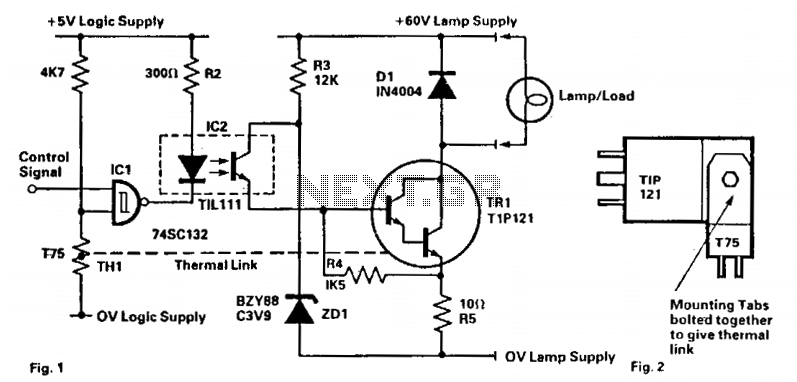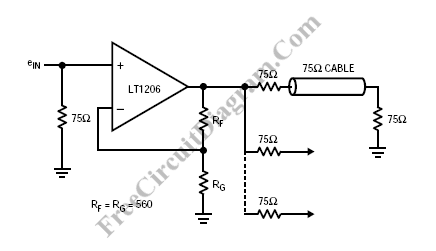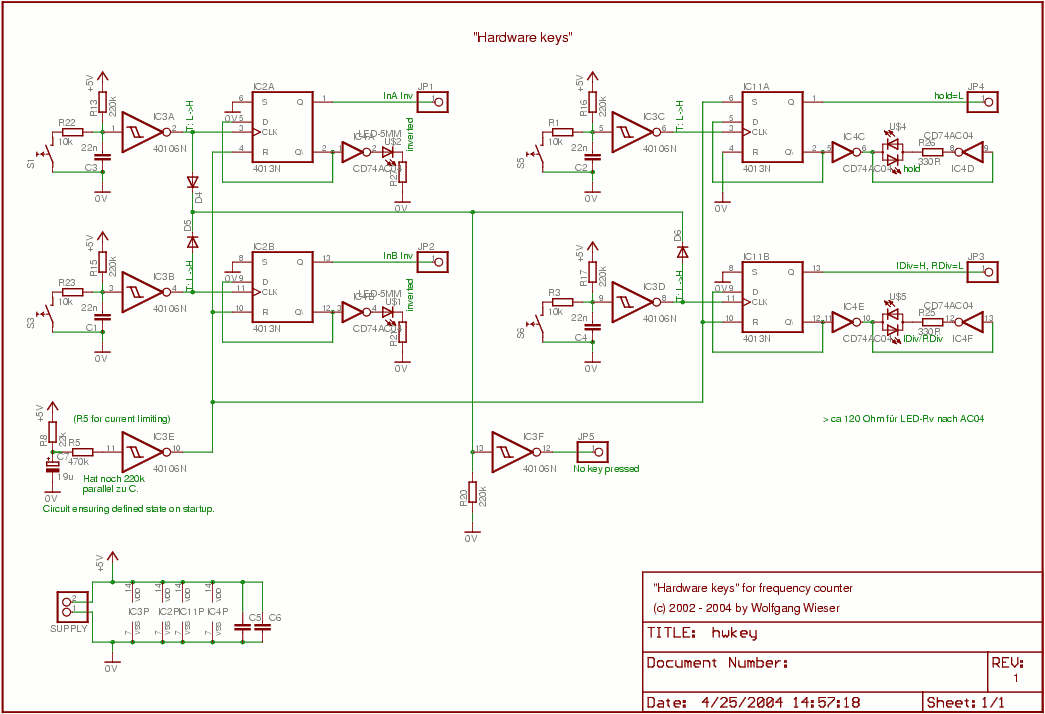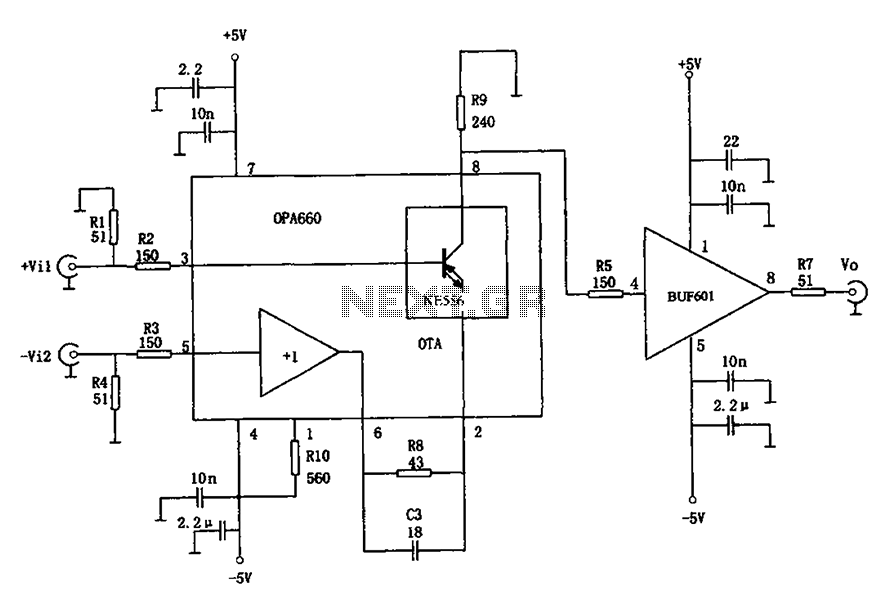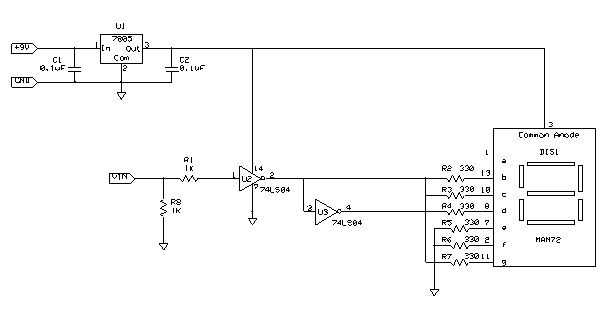
looking stcs2 based driver schematic
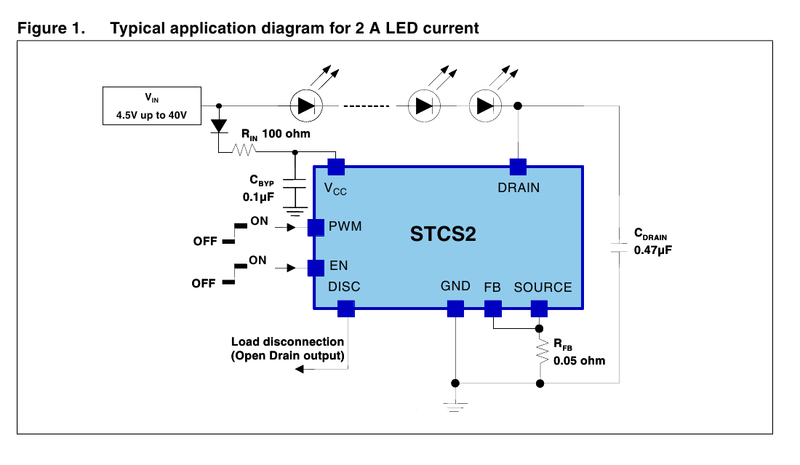
A driver based on the STCS2 for a 445nm laser is being developed. The STCS2 was selected due to its low voltage drop, and the power supply will consist of two lithium-ion cells.
The STCS2 is a highly efficient, low-dropout linear regulator designed for driving laser diodes. In this application, it is crucial to ensure that the driver provides a stable current to the 445nm laser, which is commonly used in various applications such as laser projectors, cutting, and engraving.
The circuit design will typically include the STCS2 connected to a power source comprising two lithium-ion cells in series, providing a nominal voltage of approximately 7.4V. The low voltage drop of the STCS2 allows for efficient operation, minimizing power loss and heat generation, which is particularly important when driving high-power laser diodes.
Key components in the schematic will include the STCS2 regulator, input and output capacitors to stabilize the voltage and current, and a sense resistor to monitor the laser diode current. The output of the STCS2 will be connected to the anode of the laser diode, while the cathode will be connected to ground. The sense resistor will be placed in series with the laser diode to provide feedback for current regulation.
To ensure safe operation, it is essential to include a thermal protection mechanism. This can be achieved by integrating a temperature sensor that monitors the temperature of the laser diode and the driver circuit. If the temperature exceeds a predetermined threshold, the circuit can be designed to reduce the current or shut down the laser to prevent damage.
Additionally, a microcontroller may be incorporated into the design to provide more advanced control features such as modulation of the laser output, safety interlocks, and communication with other devices. This allows for greater flexibility and precision in laser applications.
Overall, the design of the STCS2-based driver for a 445nm laser requires careful consideration of component selection, thermal management, and feedback mechanisms to ensure reliable and efficient operation.Hi! I`m going to build stcs2 based driver for 445nm. I choosed it because it has low vdrop - I`m going to power it from 2x li-ion. I found schematic.. 🔗 External reference
The STCS2 is a highly efficient, low-dropout linear regulator designed for driving laser diodes. In this application, it is crucial to ensure that the driver provides a stable current to the 445nm laser, which is commonly used in various applications such as laser projectors, cutting, and engraving.
The circuit design will typically include the STCS2 connected to a power source comprising two lithium-ion cells in series, providing a nominal voltage of approximately 7.4V. The low voltage drop of the STCS2 allows for efficient operation, minimizing power loss and heat generation, which is particularly important when driving high-power laser diodes.
Key components in the schematic will include the STCS2 regulator, input and output capacitors to stabilize the voltage and current, and a sense resistor to monitor the laser diode current. The output of the STCS2 will be connected to the anode of the laser diode, while the cathode will be connected to ground. The sense resistor will be placed in series with the laser diode to provide feedback for current regulation.
To ensure safe operation, it is essential to include a thermal protection mechanism. This can be achieved by integrating a temperature sensor that monitors the temperature of the laser diode and the driver circuit. If the temperature exceeds a predetermined threshold, the circuit can be designed to reduce the current or shut down the laser to prevent damage.
Additionally, a microcontroller may be incorporated into the design to provide more advanced control features such as modulation of the laser output, safety interlocks, and communication with other devices. This allows for greater flexibility and precision in laser applications.
Overall, the design of the STCS2-based driver for a 445nm laser requires careful consideration of component selection, thermal management, and feedback mechanisms to ensure reliable and efficient operation.Hi! I`m going to build stcs2 based driver for 445nm. I choosed it because it has low vdrop - I`m going to power it from 2x li-ion. I found schematic.. 🔗 External reference
